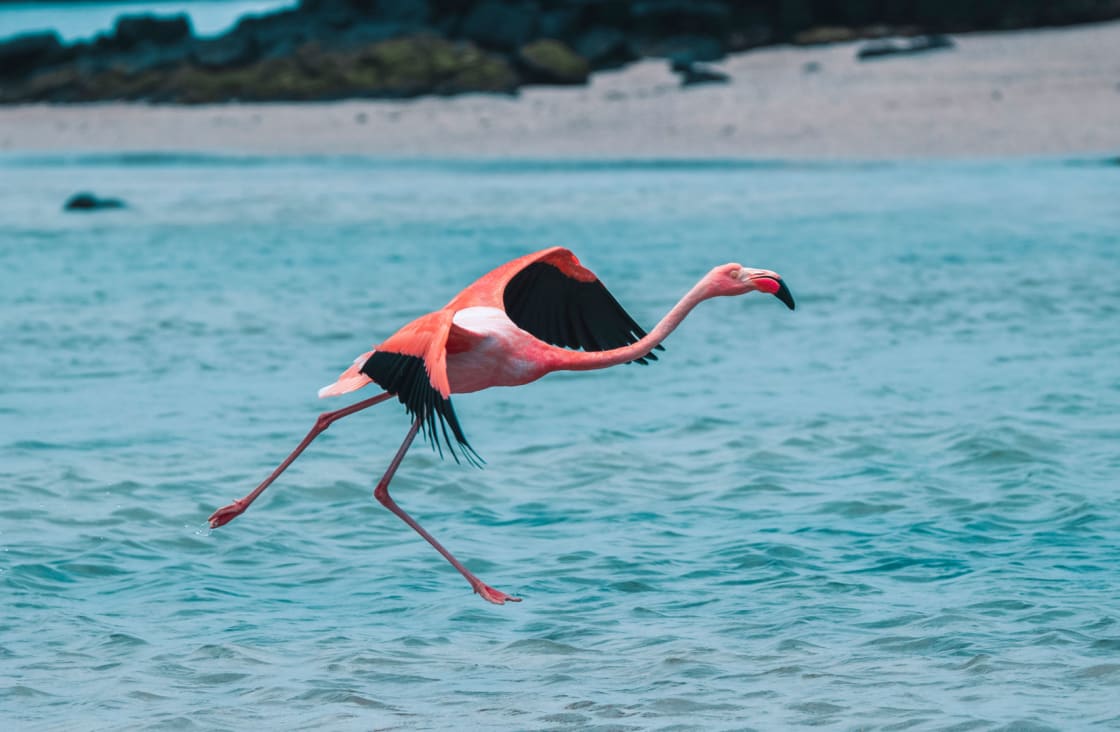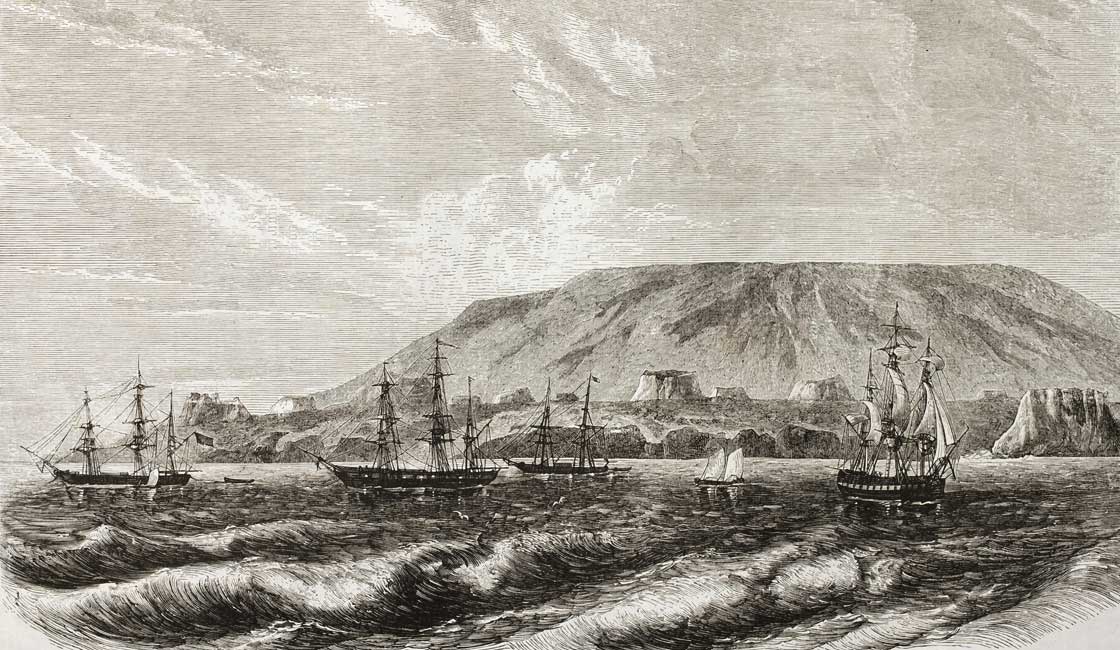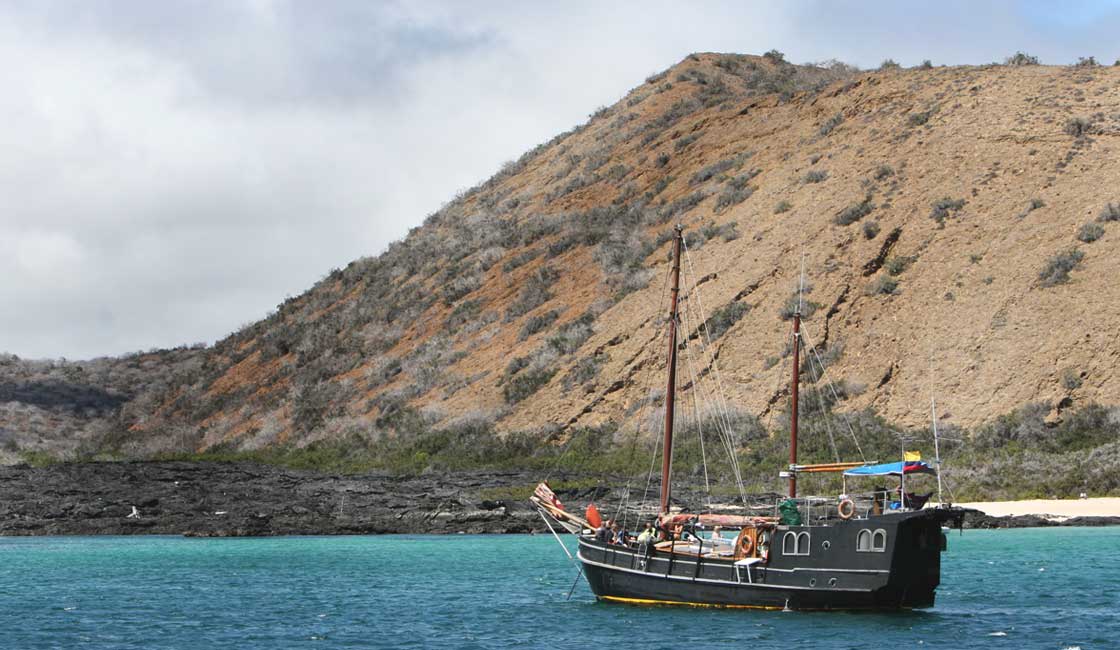
The Galapagos are most commonly associated with the famous English naturalist Charles Darwin, who set forth on the H.M.S Beagle in 1831 to observe, collect and document the islands’ many diverse and unique species. This is for good reason, as Darwin’s work had a lasting impact on the Ecuadorian islands and contributed to his ground-breaking theory of natural selection.
What many people don’t realize is that the history of the Galapagos goes back much further and that Darwin wasn’t the one to actually discover the islands. As you’ll discover, the Galapagos have been subject to significant external influences and changes over the centuries, starting with early explorers and colonists, through to pirates and poachers, collectors and scientists, right up to the tourists and conservationists of today.

By De Berard, 19th century
The Galapagos were discovered in 1535 by Fray Tomás de Berlanga, the first bishop of Panama, who happened upon the islands by pure chance during a sailing voyage to Peru. All in all, his encounter with the islands was not a happy one. Strong currents caused his ship to drift off course westwards towards the islands. His expedition crew was running low on fresh water, which they failed to find on any of the islands they encountered. In fact, they had to resort to squeezing water out from prickly cactus pads and several members died.
De Berlanga was unimpressed by the Galapagos, citing the harsh desert-like environment and describing the land as “dross and worthless, because it has not the power of raising a little grass, but only some thistles”. Subsequent Spanish explorers from the same era reinforced this original account, painting a picture of the islands as dry, inhospitable, lacking in water and food sources (aside from giant tortoises) and generally being very difficult places in which to live.
The bishop wrote an account of his adventure (the first written record on the Galapagos) which he reported to King Charles V of Spain. Whilst it was largely unenthusiastic, it does at least contain some interesting and amusing facts about the animals he encountered. De Berlanga described the giant tortoises, marine iguanas and sea lions, among other species. He also commented on the “silliness” of the birds who “didn’t know how to flee” and were all too easily caught by hand.
De Berlanga’s report did not make reference to the islands by name, but by 1570 they appeared on Ortelius’s World Atlas as the “Insulae de los Galopegos” (Islands of the Tortoises), after the giant tortoises that had been seen there. In subsequent decades, more detailed maps of the Galapagos were created, most notably a navigation chart made by buccaneer Ambrose Cowley. This included names for individual islands, which were later used by the Beagle survey of the islands.
There is some evidence that the Galapagos were discovered earlier than 1535 by the indigenous people of South America. In particular, some historians claim that Inca king Tupac Yupanqui visited the islands before De Berlanga, some 60 years earlier in fact. However, this is supported only by oral accounts, which may well be fabricated, and some experts also believe it is more likely that the Incas discovered Easter Island instead.
In 1953, Norwegian explorer Thor Heyerdahl discovered what appeared to be remains of pre-Colombian pottery and other artifacts on the Galapagos, which might point to earlier discovery and perhaps even a period of settlement by South American peoples. However, the evidence is inconclusive and doubts remain, especially as the Incas were not a seafaring culture.
Overall, as Fray Tomás de Berlanga was the first known person to unquestionably encounter the islands, as well as being someone in a position to report on his findings to European rulers, he is credited as the official “discoverer” of the Galapagos islands.

Pirate ship in Galapagos
Owing in large part to early accounts of the Galapagos as inhospitable and barren, as well as to their relative isolation, the islands were rarely visited and largely ignored by colonial powers. In the three centuries after their discovery, they did however become a refuge for pirates (particularly the English pillaging Spanish galleons), as well as those looking to exploit the islands’ natural inhabitants.
In particular, a number of wildlife species suffered as a direct result of human discovery. The Galapagos drew a large number of whalers and sealers in the nineteenth century. The discovery of huge groups of sperm whales encouraged an influx of whale ships to the islands from England, and fur seals were also highly prized for their luxurious fur and hunted to the brink of extinction.
During this time, people were also attracted by the giant tortoises, but sadly for the wrong reasons. Tortoises were one of the only fresh sources of food on the islands and it was discovered that they could survive on board ships for months on end without any food or water. They were therefore caught in their thousands and their fresh meat used to sustain sailors during long ocean voyages. The islands’ tortoise population was decimated as a result, particularly during the early 1800s, leading to the extinction and endangerment of several species. The introduction of foreign species during this time, including goats and dogs, also threatened the delicate Galapagos ecosystem, in some cases devastating the local flora and threatening native herbivores.
Up until 1832, the Galapagos were owned by the Spanish Empire, but had remained largely neglected. After this point, they were claimed by the new Republic of Ecuador. They were later renamed the “Archipelago de Colon” in honor of Christopher Columbus and his discovery of the Americas, although confusingly he didn’t discover the Galapagos Islands – as you now know! Whilst this remains their official name, they are still most widely known by the original term used to describe them, Galapagos.
Isn’t it time you discovered them for yourself? Take a look at our Galapagos Tours & Cruises and plan your next vacation!
While Rainforest Cruises aim to provide accurate and up-to-date information, we make no representations as to the accuracy or completeness of any information herein or found by following any link on this site. Rainforest Cruises cannot and will not accept responsibility for any omissions or inaccuracies, or for any consequences arising therefrom, including any losses, injuries, or damages resulting from the display or use of this information.




